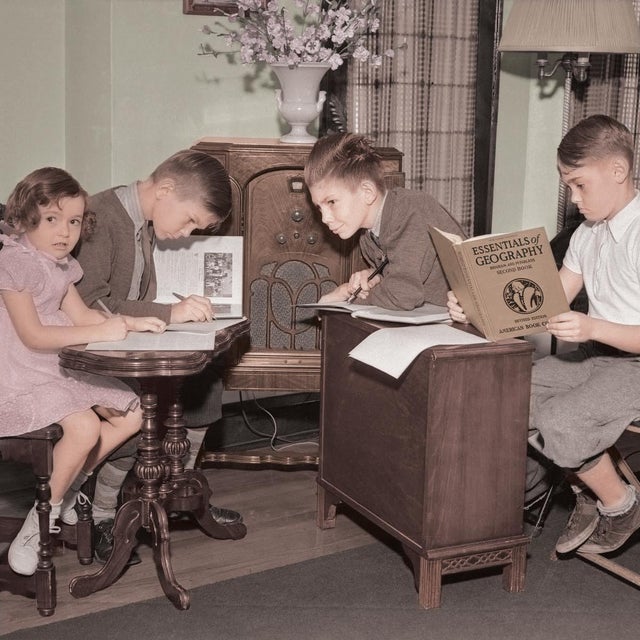General resources for parents, educators, and homeschoolers are legion – though just what it takes to create a vibrant and substantive education continues to be a matter of debate.
And what are the best educational tools? For homeschoolers, the computer is always high on everyone’s list – where would we all be without the internet? In our case, we also got a lot of mileage out of blank index cards, with which you can do practically anything, and the invaluable public library – to say nothing of LEGO bricks, model rockets, chemistry sets, bead looms, trowels and hoes, hammers and saws, and an awful lot of paint.
We met one homeschooling family who claimed that their most valuable educational tool was the bicycle, which was used for countless family field trips, including a spectacular ride across the country.
See below for books and resources on educational theory and practice, homeschooling helps, and – though at least two of our kids adored them – a mean word or two about the Berenstain Bears.
Table of Contents
About Education
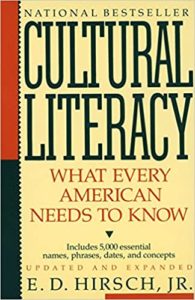 |
Educator E.D. Hirsch, Jr., argues that the problem with modern education is that it emphasizes the learning process over facts and knowledge. The bottom line: kids need information and the more of it, but better. This is the theme of Hirsch’s best-selling Cultural Literacy: What Every American Needs to Know (Vintage Books, 1988), which includes an impressive list of all the things kids need to know at least a little bit about to function in American society. Also by Hirsch, see Why Knowledge Matters (Harvard Education Press, 2016), The Knowledge Deficit (Mariner Books, 2007), and The Schools We Need and Why We Don’t Have Them (Anchor Books, 1999). The Core Knowledge Foundation has curricula and teaching guides based on Hirsch’s educational theories for grades K-8. |
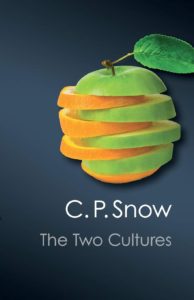 |
C.P. Snow’s The Two Cultures (Cambridge University Press, 2012), based on a lecture first delivered in 1958, discusses the split between the arts/humanities and the sciences – a divide that still has implications for our educational system and intellectual life. (Should engineers read Shakespeare? Should artists understand physics?) |
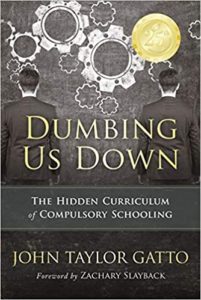 |
By award-winning educator John Taylor Gatto, Dumbing Us Down (New Society Publishers, 2017) is a protest against the “hidden curriculum” of compulsory schooling – which, Gatto believes, discourages curiosity and independent problem-solving in favor of rule-following and conformity. |
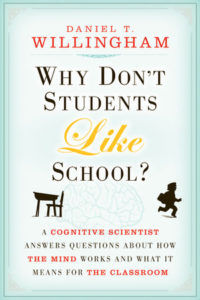 |
Cognitive scientist Daniel T. Willingham’s Why Don’t Students Like School? (Jossey-Bass, 2010) is less about why students don’t like school than how school might better show kids how to think and learn. Willingham is not a supporter of the idea of the natural learner. Thinking, he argues, is hard work and most avoid it – though people do enjoy solving problems, provided these aren’t so difficult that they leave us frustrated. He emphasizes the importance of memorizing facts and practicing skills. |
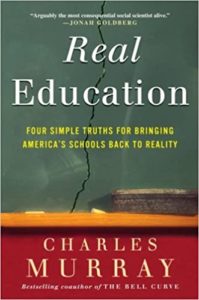 |
By Charles Murray, Real Education (Crown Forum, 2008) argues that our educational system is based on a false premise: namely, that any child can be anything he or she wants. This simply isn’t true, Murray argues, and this sort of romantic thinking does more harm than good. Children have widely different interests and abilities; and way too many kids are being channeled into college, when trade certifications might be far more affordable, appropriate, and satisfying. College, Murray suggests, should be reserved for the academically gifted. It’s an interesting read which is bound to stir up controversy. Try it on your book club. |
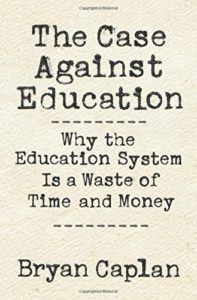 |
By economics professor Bryan Caplan, The Case Against Education (Princeton University Press, 2018) – brutally subtitled “Why the Education System Is a Waste of Time and Money” – argues that the primary aim of education is not to enhance students’ skills (most of what they learn is forgotten immediately after the final exam), but to signal the qualities of a good employee. In other words, employers reward students for investing in costly college educations that they hardly ever use. Also by Caplan, see The World Might Be Better Off Without College for Everyone from The Atlantic (January/February 2018). |
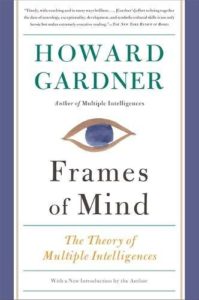 |
Howard Gardner’s Frames of Mind (Basic Books, 2011) outlines his theory of eight distinctive kinds of intelligences which – to varying extents – make up each person’s cognitive profile. These intelligences are visual-spatial, linguistic-verbal, logical-mathematical, interpersonal, intrapersonal, musical, bodily-kinesthetic, and naturalistic. For a general summary, see Gardner’s Theory of Multiple Intelligences. |
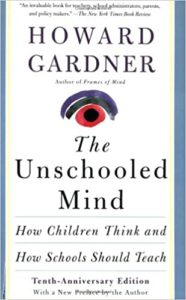 |
Gardner’s The Unschooled Mind: How Children Think and How Schools Should Teach (Basic Books, 2011) applies the theory of multiple intelligences to the schools, suggesting how education should be overhauled and restructured to mesh with kids’ actual learning processes. Gardner argues that schools would be far more successful if they operated like children’s museums or discovery centers. |
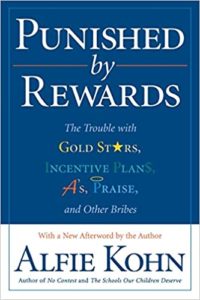 |
Alfie Kohn’s Punished by Rewards (Mariner Books, 2018) explains that neither carrots nor sticks – incentives and punishments – are effective motivators of student performance. Instead, the task at hand should be motivating in its own right. Rather than persuade kids to tackle boring tasks by offers of treats and gold stars, it’s far more effective to alter the nature of the task itself. |
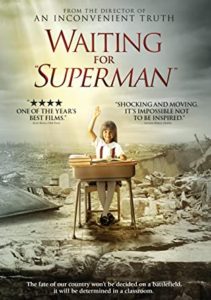 |
Edited by Karl Weber, Waiting for Superman (Participant Media, 2010) is a guide to saving the public schools, with input and opinions from a wide range of educators, experts, and concerned citizens. Topics covered include teacher tenure and performance ratings, the pros and cons of teachers’ unions, the relative efficacies of public, private, and charter schools, and many other issues that bedevil the school system today. Also see the accompanying DVD (2010). |
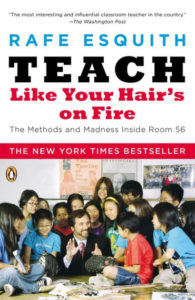 |
By innovative and inspirational fifth-grade teacher Rafe Esquith, Teach Like Your Hair’s on Fire (Penguin, 2007) – subtitled “The Methods and Madness Inside Room 56” – is crammed with creative ideas for teaching everything from math facts to economics to full-text Shakespeare. |
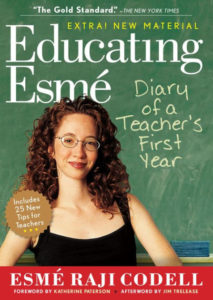 |
By Esme Raji Codell (a.k.a. Madame Esme), Educating Esme (Algonquin Books, 2009) is an informative and hilarious guide to a teacher’s first year in the classroom in an inner-city Chicago school. Though she got little support from the school administration, her creativity shines through. Who wouldn’t want a reading time machine made from a refrigerator box? |
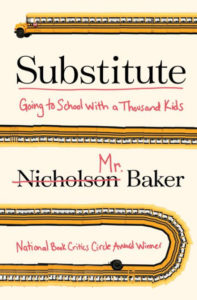 |
Nicholson Baker’s Substitute (Penguin, 2016) details the year he spent as a substitute teacher in the Maine public schools, teaching everything from kindergarten to twelfth grade. Variously described as hilarious, touching, and horrifying, his day-to-day experiences combine to paint an impressive and devastating picture of the problems inherent in present-day education. |
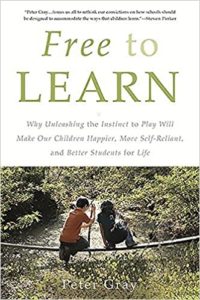 |
Kids need more time to play. In Free to Learn (Basic Books, 2015), developmental psychologist Peter Gray, based on evidence from anthropology, psychology, and history, argues that free play empowers kids, and teaches them to solve problems and interact effectively with peers. |
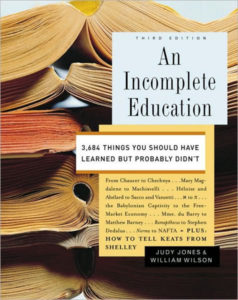 |
By Judy Jones and William Wilson, An Incomplete Education (Ballantin, 2006) is a clever and enjoyably readable compendium of all the things you should have learned in school – and either you didn’t, or you did and promptly forgot them. Covers everything from American Studies and Art History to Science and World History. |
